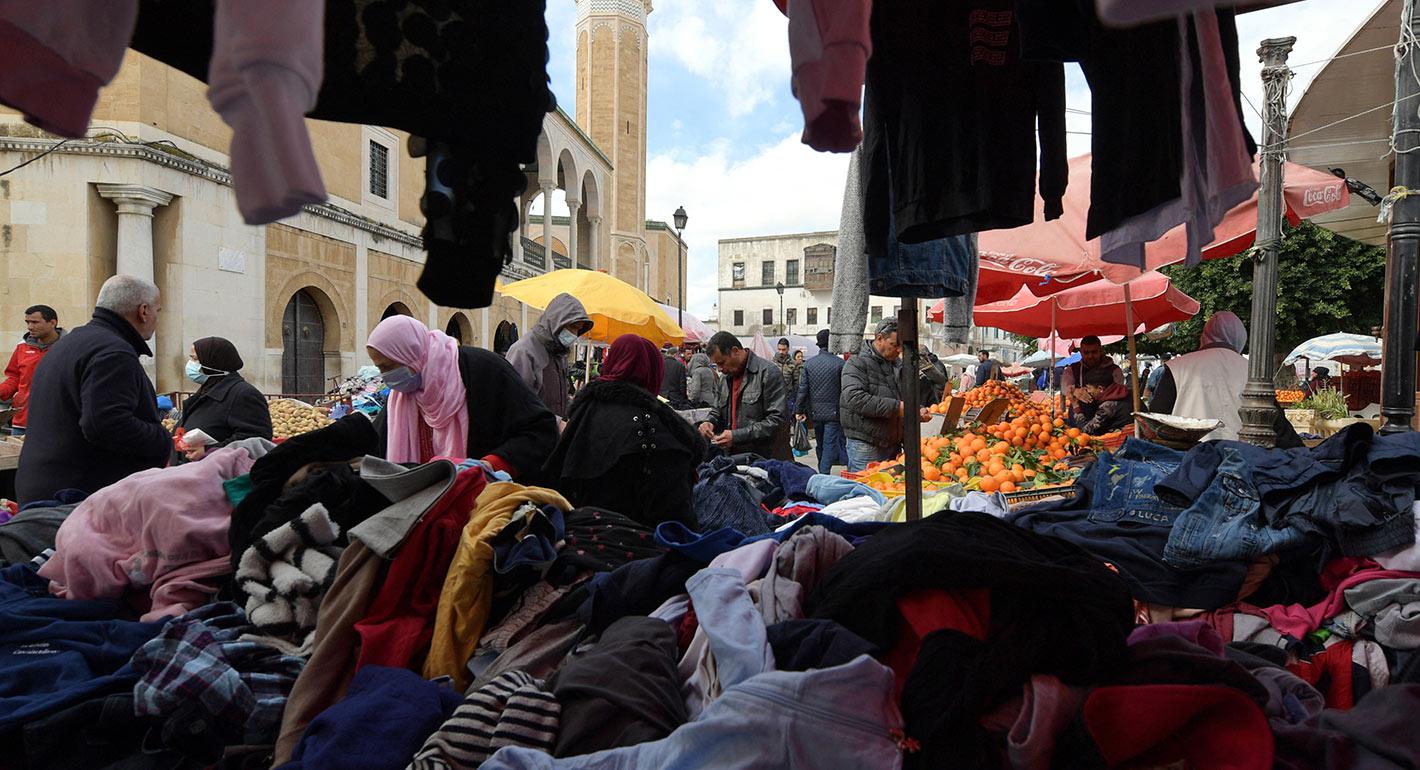Tunisia’s post-COVID economic crisis has shed light on another crisis in relation to employment, including, in particular, the low participation of women in the labor market and the precarity of informal employment, especially for the self-employed and those working for small businesses.
Demographics of Informal Employment
In 2019, informal employment reached 44.8 percent of total employment in Tunisia, which translates to around 1.6 million people out of a total employed population of approximately 3.6 million.1 This percentage indicates the very limited capacity of the formal economy to create sufficient jobs to accommodate the increased supply of labor, including a surplus of unskilled labor—particularly from illiterate and under-educated populations—that does not address the needs of the market. The result of this shortfall has been devastating for the rural population, youth, and women, who make up a large portion of the informal sector.
In general, informal employment is characterized by low levels of human capital. 45 percent of employees in this sector completed only primary education, 35 percent completed only secondary education, and 12 percent are illiterate, whereas a minority of 8 percent (or approximately 128,000 people) have pursued higher education. Notably, the 128,000 highly educated are overwhelmingly women, who make up 80,000 members of this group.

Young people, who account for 23 percent of the country’s total workforce, make up 32 percent of workers in the informal sector. This points to a lack of access to and awareness about decent work among young people, including university graduates. Affected by an unemployment rate exceeding 30 percent, many perceive informal employment to be a temporary pathway that will later allow transition to formal employment. They accept informal employment in order to preserve their status as first-time job seekers, which offers them benefits such as vocational training, job search assistance, and subsidies for micro-enterprises through the government’s active labor market policies.
Conditions of Informal Employment
Regarding the types of roles performed in the informal sector, nearly 55 percent of the informal sector are employees, most of whom live in social insecurity while employers and the self-employed often work in better conditions. Employees in the informal sector are subject to harsh working conditions, low incomes, and non-compliance with work safety and health act regulations on the part of their employers. For example, employees, particularly women, are not entitled to paid vacation, sick, or maternity leave. Furthermore, they are often dismissed and deprived of their rights in the event of labor disputes or economic problems faced by their employers.

The informal sector is characterized by limited productivity that is strongly linked to the low levels of education and training among workers. It is also explained by the small size of firms, which does not allow them to benefit from economies of scale. In fact, 85 percent of micro-enterprises employ 5 employees or less, and nearly 60 percent of them have only one or two employees. These small businesses face difficulties in accessing financial and technological advancements, which could help them transform into competitive enterprises.
Regional Effects
Informal employment affects the rural and urban regions of Tunisia in different ways, with rural areas remaining particularly dependent on the informal economy. In urban areas, only 26 percent of all jobs are in the informal economy. The western and southern regions of Tunisia are the most affected by informal employment, yet rates vary from 68 percent in the midwest to 48 percent in the northwest, 47 percent in the southwest, and 44 percent in the southeast. Greater Tunis and the northeast have the lowest rates with values equal to 22 percent and 31 percent, respectively.
The regions most dependent on informal employment lag behind the rest of the country and exhibit low levels of economic growth. They also receive the lowest share of public and private investment, an arrangement which prevents their sustainable development. Their sectoral structure is not highly diversified, and the most widespread economic activity is agriculture, which accounts for 61 percent of informal employment in rural regions. Consequently, their low adaptive capacity makes them very vulnerable to the devastating effects of the crisis.
Conclusion
A plan to facilitate the transition of workers to the formal economy is critical to achieve decent work for all and inclusive development. It requires the implementation of development-oriented policies that promote productive activities, entrepreneurship, and innovation in order to achieve economic growth that stimulates job creation. At the same time, the government must gradually strengthen its understanding of the complexities of the existing informal sector, as well as its authority over this sector, to guarantee compliance with the law and safety for all Tunisian workers as this transition occurs.
Manel Dridi holds a PhD in Economic Development. She currently serves as Advisor to the Minister of Employment and Vocational Training of Tunisia, and she is a senior research associate at Sustainable Development Forecasts and Strategies (PS2D) Laboratory, Tunis Elmanar University.
Note:
1. All statistics are based on the author’s calculations and data from the Tunisian National Institute of Statistics and the National Observatory of Employment and Qualifications.






